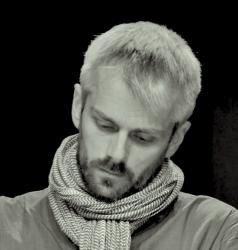Debates on Monday #8
“As is well known, duels have long ceased to take place hereabouts, and assasinations are fully past; what still remains of that sort is mainly the throwing of stones through a window in the evening or at night. Most common, however, when someone fills with rage and murderous frenzy, is for him to keep his hat on his head, at encountering the adversary, and not take it off. This headgear-vendetta has become very common around here.” Philosopher Guðmundur Finnbogason in Skírnir, 1914.
The Guns
The guns we mentioned last week have been locked up in a sealed warehouse by toll authorities until the Coast Guard can prove they were indeed received as a gift, as the Coast Guard has claimed, and not bought from the Norwegian army, as the army insists. The army has provided an invoice and a receipt for verification, which would seem somewhat conclusive, if it were not for the fact that most of the gun were imported to be used by various police precincts, and people would rather think that such authorities neither deceive the public about such acquisitions nor simply neglect to pay when they make expensive purchases. Apart from the basic fact that many would rather not equip police cars in general with MP5 machine guns, and the highly related fact that the only reasons cited to argue the need for such equipment in, potentially, all police cars are proto-fascist, inciting fears of political demonstrations on the one hand, and muslim terrorists on the other, the whole thing is a mess, leaving all of us, once more, in a state of cognitive dissonance. Chronic cognitive dissonance seems not to be a medical term yet, but it probably will be.
The Report
Last week we focused on the machine guns. At the same time, however, the police forces also made themselves newsworthy by distributing a report without sufficiently securing identities of persons supposed to remain confidential. This was their internal report on their preparations for protest-gatherings from 2008 to 2011, which author and activist Eva Hauksdottir had sought, on the basis of the Information Act, for two years. Not sufficiently securing identities means, in this case, that rather than delete the names from the pdf-document they released, police staff merely covered the names with a black graphical element, a thick line, under which the whole text remained, and could be revealed by merely copy-pasting it into any text editor or word processor.
This caused one sort of havoc, and might lead to court cases against the police. The content of the report, however, was no less upsetting: The report verified what many have supposed, that the police does register political opinions and family ties of various individuals, noting not only their legal activities, and not only their mere presence at demonstrations, but also their absence. The report also verified that the police have employed undercover agents to gather information among protesters, at a number of occasions – at least twelve times in the period surveyed.
Members of the police also seem to have been quite shocked that some members of Alþingi did not want to succumb to police control in the parliament building, during the protests. Some seemed ill at ease when the police set up camp inside. Others stood by windows, watched the crowds and even waved at people, even if police officers repeatedly expressed their disapproval of such activity.
However, however, to be fair, today, Prime Minister Sigmundur Davíð Gunnlaugsson, announced that plans were underway to establish an independent internal investigation office to oversee the work of police forces. Too little, too late, or better late than never?
The Poem
Other debates of the week included arguments for and against the proposal of Illugi Gunnarsson, Minister of education, science and culture, to designate October 30 as the “Day of the Poem.” It is the birthday of 19th century industrial entrepreneur and romantic poet Einar Benediktsson, as explained by Illugi in an article he chose to publish in the infamous Morgunblaðið. Einar, the Minister said, was a man who, while valuing nature for its own sake, understood that it must be harvested to further our overall quality of life. It does not seem far-fetched to interpret the proposal as a card dealt in the ongoing debates over heavy industries in Iceland. Apart from debates on the poet’s, i.e. Einar Ben’s, merit (which did not exactly lead to a duel, but since the notion did appear, and a radio host did challenge a publisher to one, albeit in jest, via Facebook, it would seem somewhat lackluster not to at least mention it in this summary), author and environmental campaigner Andri Snær Magnason interpreted the Minster’s proposal as an attempt to avenge for the “Day of Iceland Nature”, recently established on the birthday of Ómar Ragnarsson, entertainer and activist, who has fought vigorously against what he, and many others, see as the planned devastation of Iceland’s nature reserves.
The Speech
The Minister was involved in other debates as well: he was present at the Nordic Council award ceremony, where Benedikt Erlingsson was honered for his film “Of Horses and Men”, and subsequently gave a speech scolding Icelandic politicians for budget cuts in the field. Afterwards, Benedikt verified, he and the Minister engaged in a dialogue “Westfjords-style”, colloquially known as less than polite.
Can all this be summarized somehow? All you need to make a film is a gun and a poet?
Forecast: This will be a long winter. Numerous encounters will take place without anyone taking their hats off.
Buy subscriptions, t-shirts and more from our shop right here!
















